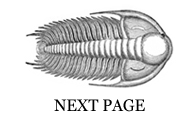Jason Abdelhadi
The People’s Madreporic Republic
I have begun to recognize evidence latent in books, periodicals and popular magazines of the 19th century that hints at the possibility of an aquatic Utopian project founded in direct opposition to the land and all the misery for which it stands. Of course these are just samples, just a recreation in miniature, what we might term “The New Aquarium Gothic”. While our hamster cages resemble gulags, we expect our aquariums to have skulls and castles, we treat the marvelous as an aquatic decoration. But the fragments of living creatures who preach the hope of the marine communards cannot be jailed in living-rooms and seafood restaurants forever. I would like to archive this evidence in a coral chest at an undisclosed location somewhere at the bottom of the Pacific Ocean. No doubt the paper will become very damp. Extracts barely legible. Many lacunae. Perhaps one day someone will recognize it to have been a retroactive influence and will with much personal risk attempt to translate it into the Coraline language of the future.
O Transverse section of the dorsal perisoma to show the termination of the madreporic canal and the reproductive organs. a, pores of the madreporic canal; b, genital pore; x, perisoma; A, madreporic canal; B, efferent duct of the genital organs.
With this apparatus, its inventor has descended several times, within the last year, to the bottom of the Bay of Naples, a depth of 224 feet, and finds the device admirably adapted for submarine exploration for coral and pearl fishery, or for the clearing of sunken ships. She has named it the “Submarine Mole,” and to adapt it for war purposes it is to be supplied with two india rubber armlets and a pair of scissors for cutting the wires of submarine mines.
She very narrowly escaped destruction, by missing a lure let down before her dazzled eyes by some hungry miscreant on board one of these floating things. A sunken fleet, viewed through the medium of the “blue profound,” fathoms deep, is indeed a singular object.
Was there a sunken ship there? — Yes.
About what distance from the shore? —About half a mile.
A wreck you mean? — A wreck.
Were her masts visible? — Partly.
What was her name? — The ‘Foggobella’.
Shall we weep while the waters roar?
Or work with the madrepore?
With the nursing fires below?
And the cradling earthquake’s throe?
To life to the light again?
Atlantis, from the shroud and chain?
Slow dawning out of her grave?
Slow whitening over the wave?
From the islet’s slender spear?
To the bloom of a hemisphere?
Wreck-raising has long passed from the experimental stage.
Some crude operations were carried on, it is true, at several sunken wrecks; but the object aimed at was the recovery of treasure, and not the raising to the surface of the vessel containing it.
The foundering of the Utopia after collision with some of the British fleet riding at anchor in the Bay of Gibraltar, and the awful life-loss that resulted, will long be remembered.
Come now, your style is not like the Sea, for the coral polypus is not only a sociable animal, fond of living in large numbers together, but she is a perfect socialist.
In these curious creatures communism prevails to its fullest extent, one for all and all for one.
As in a community of ants, so in the Siphonophore-republic, a number of differently formed animals have combined into a kind of higher social organization.
Thus, each of the Medusa-citizens might well exclaim with Faust:
“Two souls, alas! Do dwell within my breast.”
Only the harmonious cooperation and the reciprocal support of all its members, only the communal consciousness, only the central soul, linking all together in bonds of faithful love, can impart a lasting stability to the existence of both the individuals and their totality.
She enters the dark sepulchre of that melancholy communism in which element reckons for little; she teaches how to dominate individual anxieties and ambitions, and to concentrate substances for the benefit of superior lives. She sees mighty coral reefs rising from the depths of the ocean into islands and firm land, yet each individual depositor is puny, weak, and contemptible. There, over a space as large as four continents the Polypes are industriously building thousands of islands, shoals, and reefs, which are gradually studding and dividing the sea; shoals which at present are the annoyance and the dread of the mariner, but which will at length rise to the surface, join together to form a continent, which, some day – who knows? may be the refuge of the human race, when flood, or fire, or earthquake, leave it no other shelter. She sees in Polypes that there is an ambition to cease to be one. In her Republic there is a certain creature who in constant anxiety and yearning, repeats that the perfection of this vegetating existence is not real life. It constantly dreams of a freer and more expanded life.
She fancied he saw at the back of the cavern a face which laughed at her. She approached, and stooping down, found it was a human skull, with the rest of the skeleton. It was surrounded by a multitude of crabs, but they were dead and their shells empty. It was the larder of the “devil-fish”; the monster had eaten the crabs; the crabs had eaten the man.
[At which point it is understood they all erupted into universal acclamation, and in a gesture of revolutionary enthusiasm, began to sing the]
Anthem of the People’s Madreporic Republic
“Till The Sun Be Submerged” in the key of G Major
Arise, arise!
Till the Sun be submerged
And the gloomth of the Sea
Eats the land!
Arise, arise!
Till the deserts are purged
And the oysters return to the Sand.
The Sea is our dream
And our dream is our right
To dredge all landkind of its greed.
So come fish, so come crabs
So come madrepores all
Cluster round the green flag of Seaweed!
Arise, arise!
Till the Sun be submerged
And the gloomth of the Sea Eats the land!
Arise, arise!
Till the cities be spurned
And the tentacle strangles the hand.

